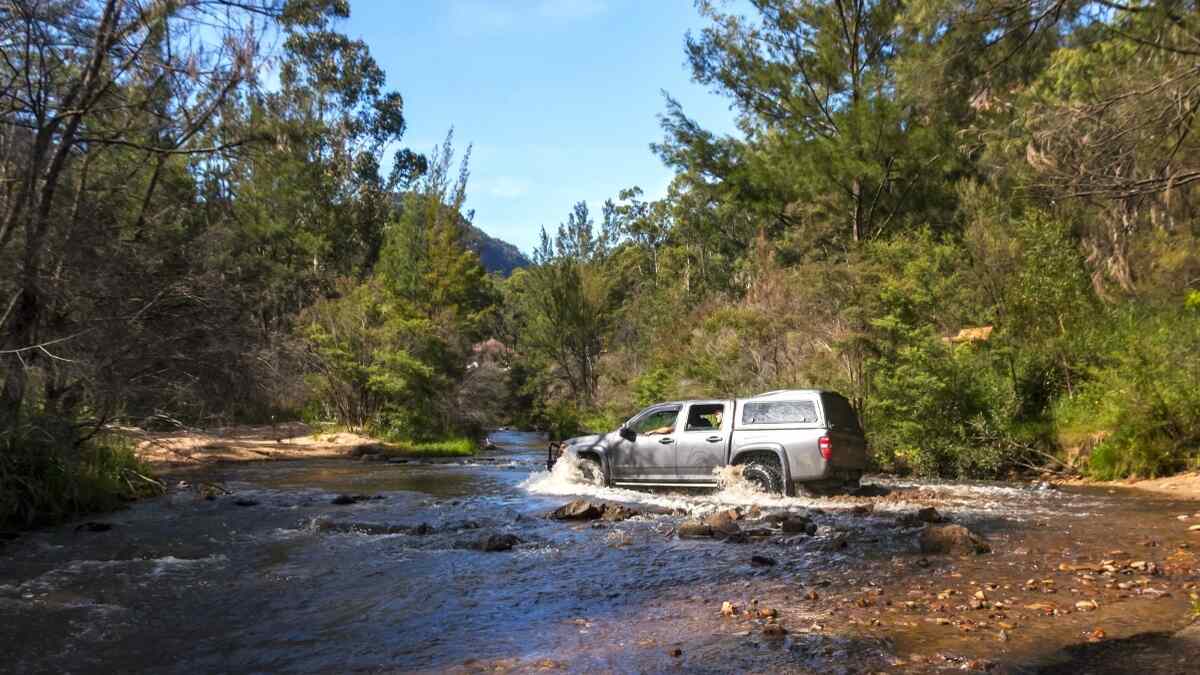Do you like to take your Tundra outdoors for off-road adventures, including some stream-crossing fun to wash off that mud and dust? Here's an older model high water problem that is a big no-no for that kind of fun.
Off-road riding is fun. So much fun that Toyota Tundra owners will often push their commonsense and their trucks to the limit when it comes to seeing just what their Toyota can take―even without special modifications to add a little more assurance during a rough ride.
Not Just Ford, There's Toyota Tough Too
As it turns out, Toyota has earned credibility for toughness that threatens the "Ford Tough" claim to fame.
In an earlier article we learned that this was especially true with some of its earlier truck models that were simple, well-made, and served a very practical utilitarian purpose for owners who needed an affordable truck that worked as hard as they did.
Most specifically, the qualifying "All-Around Best" in the automotive world―a 1990s Toyota pickup, a.k.a. the Hilux, that was built as a versatile workhorse during the 1990 era Toyota trucks.
Known for their reliability, durability, and practicality, they were a popular choice for buyers with needs ranging from daily commuting to off-road adventuring.
Killing a Toyota Truck Part 1 | Top Gear | BBC
As a demonstration of just how tough the Toyota trucks from the '90 were, here is a fun to watch video where one is put to some creative on and off-road tests.
Related article: The Most Reliable Car That You Can Abuse
Toyota Tundra High Water Problem Warning
However, before you take your Tundra out for some off-road fun, be sure that the older model you might own or are considering buying is not one of those with this common Tundra problem observed in their 2007 and 2008 models: air injection pumps that would suck water when exposed to high water conditions.
Follow along with the Car Wizard in a recent YouTube channel episode where he displays a 2008 Toyota Tundra that, oddly enough, other garages failed to correctly diagnose as to its problem―water sucked into its engine via its air injection system. As it turns out, this model has secondary air injection pumps precariously located just under the front wheel splash shields, closer to the elements than you would think (or prefer) for an advertised off-road vehicle.
That said, to access the relevant material, skip over to timepoint 8:40 in the video to see what happened to this (almost) 300,000-mile Tundra and why you might want to recheck the depth of that stream before driving your older model Tundra through it.
Is This Tundra Flood-Damaged? Another Shop Couldn't Fix It!
For additional articles related to the Toyota Tundra, here are a few for your consideration:
- Toyota Tundra Oil Sample Analysis After First 1,000 Miles
- Important Test Before Deciding Between the New Hybrid and Non-Hybrid Toyota Tundra
- Mechanic Voices His Disappointments with the New Toyota Tundra
Timothy Boyer is an automotive reporter based in Cincinnati. Experienced with early car restorations, he regularly restores older vehicles with engine modifications for improved performance. Follow Tim on Twitter at @TimBoyerWritesfor daily news and topics related to new and used cars and trucks.
COMING UP NEXT: Toyota RAV4 Diagnosis and Fix You Can Do
Image source: Deposit Photos







